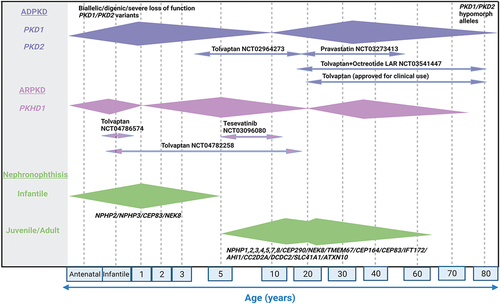Figures & data
Table 1. Molecular targets, drug compounds, preclinical trials, and clinical trials for renal ciliopathies.


